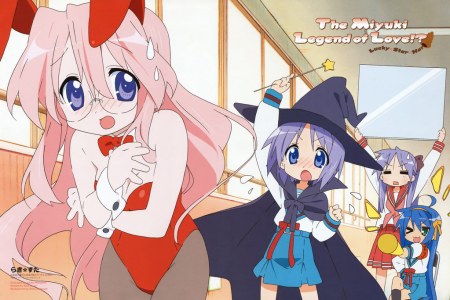This will be the last post for this blog. It has been interesting tying together gender views with the culture of Japan. On some days it was simple to do since I have been taught some of gender related subjects of Japan in previous classes, but on other days it was difficult to come up with something relevant.
I would like to say that I am not a feminist nor am I a male that looks down on women either. From my perspective, the feminist view is trying to give women more respect and rights as women, like having more people respect woman as people rather then sexual objects. Treating women as equals is just common sense to me, and people who treat women as lower beings have little to no humanity. But I am against feminist groups when they try too hard to get equal rights for woman. For example, when a feminist turns every little action on women as oppressive, like the courtesy of opening a door for a female. Yes, I opened the door for a girl out of courtesy, but I do this for everyone to be nice and I am not being oppressive to every person i open a door to.
For the blog, the topics I choose could all be turned into discussions of oppression and sexism of women, and in many aspects the arguments that arise are plausible. For instance, the genres of shounen, shoujo, and moe are media outlets that just reestablish gender roles in Japan’s society. Maid cafes and hostess clubs do indeed degrade women in some way. But to say that all woman are oppressed in Japan because these things exist is absurd. I will agree though that these things do further the stress of a woman to act toward society’s gender norm, but many women are strong enough to ignore such media and proceed with a fulfilling life without feeling oppressed.
I believe that if a person wants to stop sexism and gender roles in society, that the feminist movements must stop. Having a feminist movement to exist just constructs the idea that the problem still exists, and without the movement then the problem will dissipate over time. Instead of trying to ban things that are considered to be immoral or sexist toward women (like the lolicon ban and rapelay ban), these organizations should create programs that will allow women to gain a high self esteem to get beyond anything that may be oppressive. If you create such bans and public upheaval on such controversial subjects as “what is equal” and “what is moral” then more problems will arise. I think that there is no correct answer to these questions, because everyone will always have different views on such subjects.
In this world there will always be people who look down at a person for being to poor, for being a certain race, or for being a certain gender. No one will be able to change how these people think or how a society may think, because there is a limitless amount of norms that are contrived with limitless amounts of morals. There will always be good and evil, and the definition of each will always change as time passes. To deal with such people (who are sexist, racist, etc.) who are considered evil, one must believe in oneself. With a high self-esteem one can go beyond any type of oppression and walk through life without anything bothering or hindering one’s present and future.
My message is basically this, “Walk through life with a goal in mind, do not let others get you down, and always strive for something better.”
This song from Tengen Toppa Gurren Lagann sums it up nicely.
Thank you for reading this blog and I hope I was able to enlighten people on some aspects of the Japanese culture.




 Posted by komurin
Posted by komurin 









